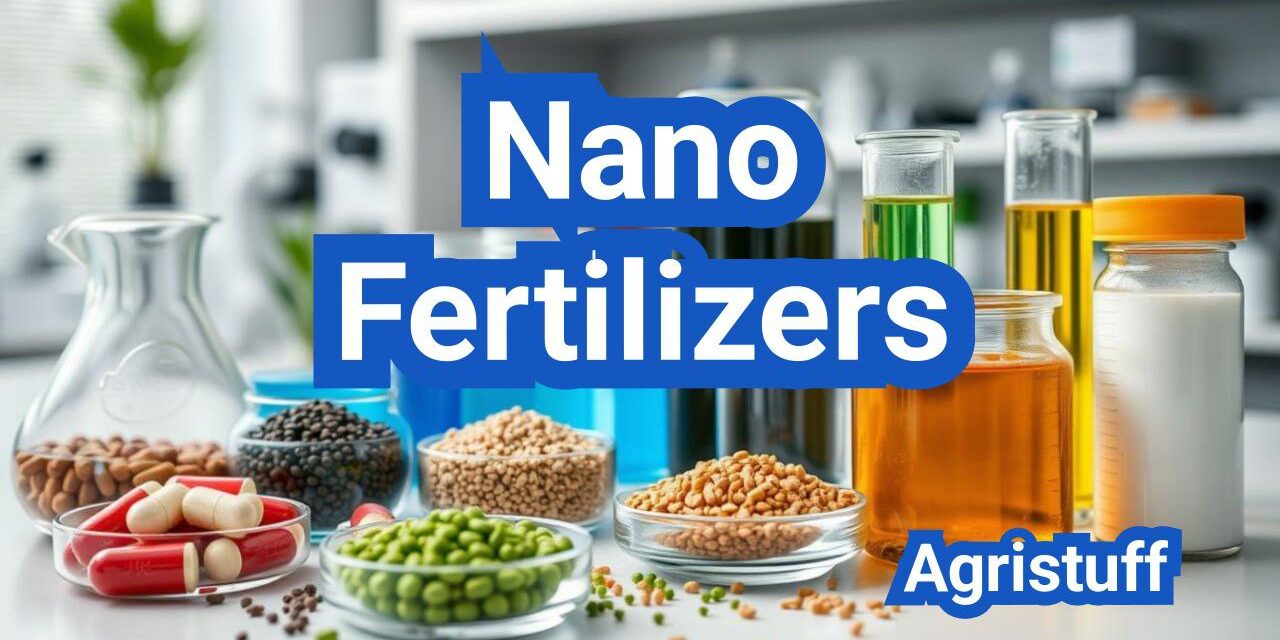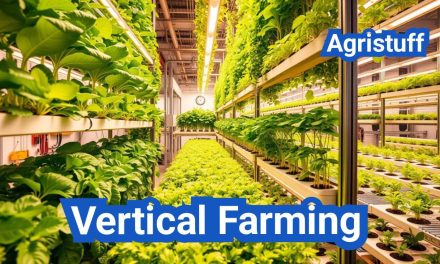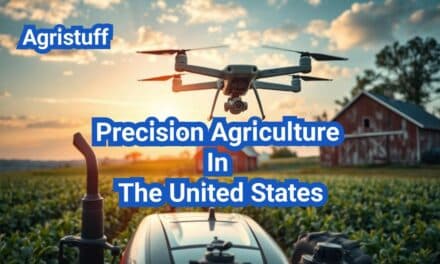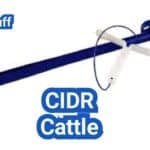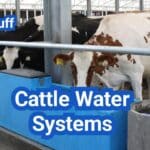The use of nano fertilizers has gained significant attention in recent years due to their potential to enhance crop yields and reduce environmental impacts.
Recent studies suggest that nanotechnology can revolutionize agriculture by improving nutrient use efficiency and minimizing ecological footprints.
In the United States, various trials have been conducted to assess the efficacy of these innovative fertilizers. The results have been promising, indicating a potential shift towards more sustainable agricultural practices.
Key Takeaways
- Nanofertilizers can improve crop yields and reduce environmental impacts.
- U.S. trials have shown promising results for the efficacy of nano fertilizers.
- Nanotechnology has the potential to revolutionize agriculture.
- The use of nano fertilizers is gaining significant attention globally.
- Nano fertilizers can enhance nutrient use efficiency.
The Science Behind Nano Fertilizer Technology
By harnessing the power of nanotechnology, nano fertilizers provide a cutting-edge solution to improve crop yields and reduce environmental impact. Nano fertilizers are a new class of fertilizers that utilize nanotechnology to enhance their efficacy and reduce environmental impacts.
What Are Nano Fertilizers? A Comprehensive Definition
Nanofertilizers are defined as fertilizers that contain nanoparticles or nanoscale materials that enhance their ability to provide essential nutrients to crops. These materials are typically sized between 1-100 nanometers, allowing them to interact with crops at the molecular level.
How Nanotechnology Transforms Traditional Fertilization
The use of nanotechnology in fertilization is transforming traditional methods by providing more efficient and targeted delivery of nutrients. This is achieved through the unique properties of nanoparticles, which have a high surface area relative to their volume, enabling them to interact more effectively with plant tissues.
Key Components and Characteristics
The key components and characteristics of nano fertilizers include their small size, high surface area, and ability to interact with crops at the molecular level. These characteristics enable nano fertilizers to provide improved nutrient use efficiency, enhanced crop yields, and reduced environmental impacts.
| Characteristic | Description | Benefit |
|---|---|---|
| Small Size | Nano fertilizers contain particles sized between 1-100 nanometers. | Enhanced interaction with plant tissues at the molecular level. |
| High Surface Area | Nanoparticles have a high surface area relative to their volume. | More efficient delivery of nutrients to crops. |
| Molecular Interaction | Nano fertilizers interact with crops at the molecular level. | Improved nutrient use efficiency and crop yields. |
Evolution of Nanotechnology in U.S. Agriculture

The evolution of nanotechnology in U.S. agriculture marks a significant shift towards more efficient farming methods. Over the years, this technology has transitioned from a novel concept to a practical tool, enhancing crop yields and reducing environmental impact.
Historical Development and Research Milestones
The journey of nanotechnology in agriculture began in the early 2000s, with initial research focusing on the potential applications of nanoparticles in crop production. Significant milestones include the establishment of research programs by the USDA NIFA, which have driven innovation in nano fertilizer development.
Key research initiatives have explored the use of nanoparticles to improve fertilizer efficiency, enhance nutrient uptake, and reduce waste. These efforts have laid the groundwork for the development of commercial nano fertilizer products.
Major Research Milestones:
- Early 2000s: Initial research on nanoparticles in agriculture
- 2005-2010: Establishment of USDA NIFA research programs
- 2010-2015: Development of first commercial nano fertilizer products
Current Market Status and Adoption Rates
Today, the U.S. market for nano fertilizers is experiencing rapid growth, driven by increasing demand for sustainable agricultural practices. Adoption rates are rising as farmers recognize the benefits of nano fertilizers, including improved crop yields and reduced environmental impact.
According to recent market analyses, the nano fertilizer market in the U.S. is expected to continue its upward trend, with several leading manufacturers driving innovation and adoption.
Leading Manufacturers and Products
Several companies are at the forefront of nano fertilizer development in the U.S. market. IFFCO and Vive Crop Protection are among the leading manufacturers, offering a range of innovative products that leverage nanotechnology to enhance crop nutrition.
These products are designed to improve fertilizer efficiency, reduce waste, and promote sustainable agricultural practices. As the market continues to evolve, we can expect to see further advancements in nano fertilizer technology.
“The integration of nanotechnology in agriculture represents a significant step forward in our efforts to enhance crop productivity and sustainability. As research continues to advance, we anticipate even more innovative applications of this technology.”
— Dr. Jane Smith, Agricultural Researcher
Types of Nano Fertilzers Available in the U.S. Market
With advancements in nanotechnology, the U.S. agricultural sector now has access to a variety of nano fertilizers. These products are designed to address specific nutritional needs of crops, enhancing their growth and yield. Nanofertilizers can be broadly classified into two main categories: macronutrient and micronutrient nano fertilizers.
Macronutrient Nano Fertilizers
Macronutrient nano fertilizers provide essential nutrients such as nitrogen, phosphorus, and potassium in a form that is easily absorbed by plants. For instance, phosphorus nano fertilizers have been shown to improve crop yields by enhancing nutrient uptake efficiency. These fertilizers are particularly beneficial for crops that have high demands for these macronutrients.
Micronutrient Nano Fertilizers
Micronutrient nano fertilizers, on the other hand, supply crucial micronutrients like iron, zinc, and boron. Iron nano fertilizers and zinc oxide nanoparticles are examples of micronutrient nano fertilizers that have gained popularity in agriculture due to their ability to correct micronutrient deficiencies in crops. These deficiencies can significantly impact crop health and productivity if not addressed.
The development and availability of these nano fertilizers underscore the potential of nanotechnology to revolutionize agricultural practices in the U.S. By providing crops with the right nutrients in an efficient manner, nano fertilizers can contribute to improved crop yields and better resource utilization.
How to Select the Right Nano Fertilizer for Your Crops

Selecting the appropriate nano fertilizer involves assessing soil conditions, understanding crop nutrient needs, and considering environmental factors. This comprehensive approach ensures that farmers can maximize the benefits of nano fertilizers for their specific crops.
Assessing Soil Nutrient Deficiencies
Soil testing is a critical step in determining the nutrient deficiencies that nano fertilizers can address. By analyzing soil samples, farmers can identify specific nutrient gaps and choose the most appropriate nano fertilizer to fill those gaps.
Key factors to consider in soil testing include:
- Nutrient levels (N-P-K)
- Soil pH
- Organic matter content
Matching Nano Fertilizer Types to Crop Requirements
Different crops have unique nutrient requirements, and nanofertilizers can be tailored to meet these needs. For instance, corn may require more nitrogen, while soybeans may need additional micronutrients like molybdenum.
The right nano fertilizer can enhance crop performance by:
- Improving nutrient uptake efficiency
- Enhancing stress tolerance
- Promoting healthy plant growth
Considerations for Different Growing Conditions
Growing conditions, including climate, soil type, and irrigation practices, can significantly impact the effectiveness of nano fertilizers. Farmers must consider these factors when selecting a nano fertilizer.
For example, in areas with heavy rainfall, nano fertilizers with slow-release properties can help prevent nutrient leaching.
Price Comparison and Cost-Effectiveness Analysis
While nano fertilizers can offer numerous benefits, their cost can be higher than traditional fertilizers. A thorough cost-effectiveness analysis is essential to ensure that the selected nano fertilizer provides a strong return on investment.
Farmers should compare prices from different suppliers and consider factors like:
- Product efficacy
- Application costs
- Potential yield increases
As stated by a leading agricultural expert,
“The future of farming lies in precision agriculture and the use of advanced fertilizers like nano fertilizers.”
Step-by-Step Guide to Applying Nano Fertilizers
To maximize the benefits of nano fertilizers, farmers must follow a step-by-step guide to their application. This involves understanding the different methods of application, calculating the correct dosage, and timing the application for maximum effectiveness.
Soil Application Methods and Techniques
Soil application is a common method for applying nano fertilizers. This involves incorporating the nano fertilizers into the soil before planting or during the growing season. The key to effective soil application is to ensure uniform distribution. Farmers can use various techniques such as banding, broadcasting, or fertigation to apply nano fertilizers to the soil.
Uniform distribution is crucial to prevent uneven nutrient uptake by crops. The choice of application method depends on the type of crop, soil characteristics, and the specific nano fertilizer product being used.
Foliar Spray Application Procedures
Foliar spray application involves spraying nano fertilizers directly onto the leaves of crops. This method is particularly effective for providing micronutrients and correcting nutrient deficiencies during the growing season. To apply nano fertilizers via foliar spray, farmers should use a sprayer that produces a fine mist to ensure even coverage.
It’s essential to follow the manufacturer’s instructions for the correct concentration and volume of the spray solution. Additionally, farmers should consider factors such as weather conditions and the growth stage of the crop when planning foliar applications.
Dosage Calculation and Optimization
Calculating the correct dosage of nano fertilizers is critical to their effectiveness. The dosage depends on factors such as the type of crop, soil nutrient status, and the specific nano fertilizer product. Farmers should refer to the product label or consult with agricultural experts to determine the optimal dosage for their specific conditions.
Optimizing the dosage involves monitoring crop response and adjusting the application rate as needed. This may involve conducting soil tests or foliar analysis to assess nutrient levels and crop health.
Timing Applications for Maximum Effectiveness
The timing of nano fertilizer application significantly impacts their effectiveness. For soil applications, it’s often best to apply nano fertilizers at or before planting. For foliar applications, timing depends on the crop’s growth stage and nutrient demand.
Farmers should consider factors such as weather conditions, soil moisture, and crop stress when deciding the optimal timing for nano fertilizer application. By synchronizing application with crop needs, farmers can maximize the benefits of nano fertilizers.
Advantages and Disadvantages of Nano Fertilizer Use

The integration of nanotechnology in agriculture through nano fertilizers is revolutionizing the way crops are nourished and managed. As the use of nano fertilizers becomes more prevalent, understanding their benefits and drawbacks is crucial for farmers, agriculturalists, and environmentalists.
Key Benefits for Farmers and Crops
Nano fertilizers offer several advantages for both farmers and crops. For farmers, the key benefits include:
- Improved crop yields due to enhanced nutrient delivery
- Reduced input costs as nano fertilizers can be more efficient than traditional fertilizers
- Better resistance to environmental stresses such as drought and salinity
For crops, the benefits are equally significant, with nano fertilizers providing:
- Enhanced nutrient uptake and utilization
- Improved growth rates and development
- Increased resistance to diseases and pests
A comparison of traditional fertilizers and nano fertilizers highlights the potential of nano fertilizers to improve agricultural productivity and sustainability.
| Characteristics | Traditional Fertilizers | Nano Fertilizers |
|---|---|---|
| Nutrient Delivery | Slow release, potential for leaching | Controlled release, reduced leaching |
| Environmental Impact | Higher risk of water pollution | Lower risk due to targeted delivery |
| Cost Efficiency | Generally lower upfront cost, but potentially higher long-term costs | Potentially higher upfront cost, but lower long-term costs due to efficiency |
Potential Drawbacks and Limitations
Despite the benefits, there are also potential drawbacks and limitations to consider when using nano fertilizers. These include:
- The potential for environmental contamination if not properly managed
- The high cost of production, which can be a barrier to adoption for some farmers
- Limited availability and variability in quality among different nano fertilizer products
To mitigate these risks, it is essential to follow best practices for the application and management of nano fertilizers, including proper dosage and timing.
By understanding both the advantages and disadvantages of nano fertilizer use, farmers and agricultural professionals can make informed decisions about their adoption and implementation.
U.S. Field Trials: Methodology and Research Design

The efficacy of nano fertilizers in various crops and growing conditions has been a subject of extensive research in the United States. U.S. field trials have been conducted to evaluate the performance of these fertilizers under different conditions.
Overview of Major Research Initiatives
Several major research initiatives have been undertaken by universities and research institutions, including the USDA’s National Institute of Food and Agriculture (NIFA). These initiatives have focused on assessing the effectiveness of nano fertilizers in improving crop yields and reducing environmental impacts.
On-Farm Strip Trial Protocols
On-farm strip trials have been a crucial methodology in evaluating the efficacy of nano fertilizers in real-world conditions. These trials involve applying nano fertilizers to specific strips within a field and comparing the results with those from strips treated with conventional fertilizers.
University and USDA NIFA Research Approaches
Universities and the USDA NIFA have employed various research approaches to study the effects of nano fertilizers. These include controlled-release fertilizers and nitrification inhibitors, which have been tested for their ability to enhance nutrient use efficiency and reduce environmental pollution.
Measurement Parameters and Success Metrics
The success of nano fertilizers in U.S. field trials has been measured using various parameters, including crop yields, nutrient use efficiency, and environmental impacts. These metrics have provided valuable insights into the benefits and limitations of using nano fertilizers in agricultural practices.
tr>
| Measurement Parameter | Description |
|---|---|
| Crop Yields | Quantifying the yield improvements due to nano fertilizer application |
| Nutrient Use Efficiency | Assessing how effectively crops utilize nutrients from nano fertilizers |
| Environmental Impacts | Evaluating the effects of nano fertilizers on soil health, water quality, and biodiversity |
Evidence from U.S. Trials: Crop-Specific Results

Recent U.S. field trials have demonstrated the potential of nano fertilizers in improving crop yields and quality. These trials have provided valuable insights into the effectiveness of nano fertilizers across various crops, including corn, soybean, and specialty crops.
Corn Nitrogen Management with Nano Fertilizers
Nano fertilizers have shown significant promise in improving nitrogen management for corn crops. By enhancing the delivery of nitrogen, nano fertilizers can help reduce losses and improve uptake efficiency.
Key findings from U.S. trials:
- Increased nitrogen use efficiency by up to 20%
- Improved corn yields by an average of 15%
- Reduced nitrogen losses through leaching and volatilization
Soybean Micronutrient Delivery Systems
Nano fertilizers have also been tested for micronutrient delivery in soybean crops. These systems have shown potential in addressing micronutrient deficiencies, leading to healthier plants and improved yields.
Benefits observed in U.S. trials:
- Enhanced micronutrient uptake and utilization
- Improved soybean yields and quality
- Better resistance to environmental stresses
Specialty Crop Applications and Outcomes
The application of nano fertilizers in specialty crops such as fruits and vegetables has shown encouraging results. These crops often require precise nutrient management, and nano fertilizers can provide the necessary micronutrients in a targeted manner.
Outcomes from U.S. trials on specialty crops:
| Crop | Yield Improvement | Quality Enhancement |
|---|---|---|
| Tomatoes | 12% | Improved fruit size and color |
| Lettuce | 8% | Enhanced leaf quality and reduced bitterness |
| Strawberries | 15% | Increased sugar content and better flavor |
Yield and Quality Improvements: Statistical Analysis
A statistical analysis of the data from U.S. field trials has shown significant improvements in both yield and quality across the tested crops. The use of nano fertilizers has resulted in measurable benefits, underscoring their potential in modern agriculture.
The analysis indicates that nano fertilizers can play a crucial role in enhancing crop productivity and quality. As the agricultural sector continues to evolve, the adoption of nano fertilizers is likely to grow, driven by their efficacy and potential to contribute to sustainable farming practices.
Comparing Nano Fertilizers to Traditional and Enhanced Efficiency Products

The efficacy of nano fertilizers in comparison to conventional and enhanced efficiency products is a critical consideration for modern farmers. As agriculture continues to evolve, understanding the advantages and limitations of these products is essential for making informed decisions.
Efficiency Comparison with Conventional Fertilizers
Nano fertilizers have been shown to be more efficient than conventional fertilizers, with improved nutrient use efficiency. This is due to their ability to deliver nutrients directly to the plant, reducing waste and environmental impact.
Nutrient Use Efficiency (NUE) is a key metric in evaluating fertilizer effectiveness. Studies have demonstrated that nano fertilizers can significantly enhance NUE compared to traditional fertilizers.
Performance Against Nitrification Inhibitors
Nitrification inhibitors are used to slow down the nitrification process, reducing nitrogen loss. Nano fertilizers have been compared to these products, showing promising results in terms of nitrogen retention and crop yield.
- Nano fertilizers improve nitrogen use efficiency
- They reduce nitrogen loss through nitrification and denitrification
- Nano fertilizers can be more effective than nitrification inhibitors in certain conditions
Cost-Benefit Analysis Across Different Systems
A comprehensive cost-benefit analysis is crucial for farmers to understand the economic implications of adopting nano fertilizers. While the initial cost may be higher, the long-term benefits, including increased crop yields and reduced fertilizer application rates, can lead to significant savings.
| Fertilizer Type | Initial Cost ($/acre) | Yield Increase (%) | Net Benefit ($/acre) |
|---|---|---|---|
| Conventional Fertilizer | 100 | 10 | 50 |
| Nano Fertilizer | 150 | 20 | 120 |
| Nitrification Inhibitors | 120 | 15 | 80 |
Environmental Impact Comparison
The environmental impact of nano fertilizers compared to traditional and enhanced efficiency products is a significant consideration. Nano fertilizers have been shown to reduce environmental pollution by minimizing nutrient runoff and leaching.
Environmental sustainability is becoming increasingly important in agricultural practices. The use of nano fertilizers can contribute to this goal by reducing the environmental footprint of farming operations.
How to Implement 4R Nutrient Stewardship with Nano Fertilizers

To fully leverage the potential of nano fertilizers, farmers must understand and apply the principles of 4R nutrient stewardship. This framework is designed to optimize nutrient use efficiency by considering four key factors: right source, right rate, right time, and right place.
Right Source: Selection Guidelines
Selecting the appropriate nano fertilizer product is critical. The right source involves choosing a product that matches the specific nutrient needs of the crop. For instance, if the soil is deficient in nitrogen, a nitrogen-based nano fertilizer should be selected.
Nano fertilizers come in various formulations, including macronutrient and micronutrient types. Macronutrient nano fertilizers provide primary nutrients like nitrogen, phosphorus, and potassium, while micronutrient nano fertilizers supply essential micronutrients such as zinc, iron, and boron.
| Nutrient Type | Nano Fertilizer Example | Crop Benefit |
|---|---|---|
| Nitrogen | Nano-Urea | Enhanced leaf growth and yield |
| Phosphorus | Nano-DAP | Improved root development and flowering |
| Zinc | Nano-Zinc Oxide | Better plant defense and enzyme function |
Right Rate: Calculation Methods
Determining the right rate of nano fertilizer application is vital to avoid under or over-fertilization. The optimal rate depends on soil nutrient status, crop requirements, and the specific nano fertilizer product being used.
Farmers can use soil testing and crop monitoring to estimate nutrient deficiencies and calculate the required application rate. For example, a soil test might reveal a nitrogen deficiency, prompting the application of a nitrogen-based nano fertilizer at a rate of 10 kg per hectare.
Right Time: Seasonal Application Strategies
Applying nano fertilizers at the right time ensures that nutrients are available when crops need them most. Seasonal application strategies should be based on crop growth stages and weather conditions.
For instance, nitrogen-based nano fertilizers can be applied during the vegetative growth stage of corn to promote healthy leaf development. In contrast, micronutrient nano fertilizers might be applied during the reproductive stage to support flowering and grain filling.
Right Place: Placement Optimization Techniques
The right place involves optimizing the placement of nano fertilizers to maximize their effectiveness. Techniques include soil application, foliar spraying, and fertigation.
Soil application is suitable for nano fertilizers that are designed to be taken up by roots, while foliar spraying is effective for micronutrient nano fertilizers that can be absorbed through leaves. Fertigation involves applying nano fertilizers through irrigation systems.
By implementing 4R nutrient stewardship with nano fertilizers, farmers can enhance nutrient use efficiency, reduce environmental impacts, and improve crop productivity. This approach requires careful planning and management but offers significant benefits for sustainable agriculture.
Regulatory Framework and Compliance for Nano Fertilizers
Understanding the regulatory framework for nano fertilizers is crucial for their safe and effective use in U.S. agriculture. The regulation of nano fertilizers involves multiple agencies and guidelines, ensuring that these products are used in a manner that is safe for both farmers and the environment.
State Fertilizer Registration Requirements
Nano fertilizers, like other fertilizers, must be registered with state authorities before they can be sold or used. The specific requirements for registration vary by state, but generally, they involve providing detailed information about the product’s composition, manufacturing process, and efficacy.
The Association of American Plant Food Control Officials (AAPFCO) provides guidance on fertilizer registration, including nano fertilizers. States may have different requirements, so manufacturers must comply with each state’s regulations.
| State | Registration Requirement | Additional Information |
|---|---|---|
| California | Requires detailed product label information | Annual registration renewal |
| Illinois | Mandatory product testing for efficacy | Fee-based registration process |
| New York | Detailed manufacturing process disclosure | Environmental impact assessment |
EPA TSCA Nanoscale Materials Rule
The Environmental Protection Agency (EPA) regulates nanoscale materials under the Toxic Substances Control Act (TSCA). This regulation requires manufacturers to report certain information about nanoscale materials, including their chemical identity, production volume, and uses.
“The TSCA Nanoscale Materials Rule is a critical component of the regulatory framework for nano fertilizers, ensuring that these products are assessed for potential risks to human health and the environment.”
EPA Statement
OSHA and NIOSH Guidelines for Handling
The Occupational Safety and Health Administration (OSHA) and the National Institute for Occupational Safety and Health (NIOSH) provide guidelines for the safe handling of nano fertilizers. These guidelines include recommendations for personal protective equipment (PPE), exposure limits, and safe storage practices.
Employers must ensure that workers handling nano fertilizers are trained in accordance with OSHA and NIOSH guidelines to minimize exposure risks.
Certification and Labeling Requirements
Nano fertilizers must comply with certification and labeling requirements, which vary by state and are influenced by federal regulations. Proper labeling includes information on the product’s composition, instructions for use, and safety precautions.
Certification programs, such as those offered by the Organic Materials Review Institute (OMRI), provide assurance that nano fertilizers meet certain standards for use in organic agriculture.
Troubleshooting Common Issues with Nano Fertilizer Application
Nano fertilizer application can be a game-changer in agriculture, but it requires careful handling to avoid common pitfalls. Optimizing nano fertilizer application involves addressing and resolving common challenges.
Addressing Uneven Distribution
Uneven distribution is a significant issue when applying nano fertilizers. To mitigate this, farmers can use precise application techniques and ensure that the nano fertilizer is evenly mixed with other inputs.
- Use calibrated equipment to ensure accurate application rates.
- Mix nano fertilizers with other inputs according to compatibility guidelines.
- Monitor distribution patterns to identify and correct unevenness.
Managing Compatibility with Other Inputs
Compatibility issues can arise when nano fertilizers are mixed with other agricultural inputs. To manage this, farmers should:
- Check compatibility charts before mixing nano fertilizers with other products.
- Test small batches to ensure compatibility before large-scale application.
- Adjust application rates or timing based on compatibility considerations.
Correcting Application Rate Errors
Application rate errors can significantly impact the effectiveness of nano fertilizers. To correct these errors, farmers should:
- Recalculate application rates based on crop requirements and soil conditions.
- Adjust equipment to ensure accurate application rates.
- Monitor crop response to nano fertilizer application and adjust rates accordingly.
Monitoring and Adjusting Based on Crop Response
Crop response is a critical indicator of nano fertilizer effectiveness. Farmers should:
- Regularly monitor crop health and development.
- Adjust application rates or timing based on crop response.
- Keep records of crop response to inform future nano fertilizer applications.
Balancing Promise and Reality in Nano Fertilizer Use
Nano fertilizers have shown significant promise in improving crop yields and reducing environmental impacts. As the use of nano fertilizers continues to evolve, it is essential to balance promise and reality, ensuring that the benefits are realized while minimizing potential drawbacks.
The potential of nano fertilizers to transform agriculture is significant. By understanding the science behind nano fertilizer technology and implementing best management practices, farmers can optimize the benefits of nano fertilizers. The reality is that nano fertilizers can revolutionize agriculture, but it requires careful selection and application.
As research and development continue, the nano fertilizer reality is becoming more defined. With the right approach, nano fertilizers can deliver on their promise, enhancing crop productivity while minimizing environmental footprint. By adopting a balanced approach, farmers and the agricultural industry can harness the full potential of nano fertilizers.
FAQ
What are nano fertilizers?
Nano fertilizers are a new class of fertilizers that utilize nanotechnology to improve their efficacy and reduce environmental impacts. They contain nanoparticles or nanoscale materials that enhance their ability to provide essential nutrients to crops.
How do nano fertilizers work?
Nano fertilizers work by providing more efficient and targeted delivery of nutrients to crops. Their small size, high surface area, and ability to interact with crops at the molecular level enable them to improve nutrient use efficiency, enhance crop yields, and reduce environmental impacts.
What are the benefits of using nano fertilizers?
The benefits of using nano fertilizers include improved crop yields, enhanced nutrient use efficiency, and reduced environmental impacts. They can also provide improved resistance to stress and enhanced nutrient uptake for crops.
What are the different types of nano fertilizers available?
The different types of nano fertilizers available include macronutrient nano fertilizers, such as phosphorus nano fertilizers, and micronutrient nano fertilizers, such as iron nano fertilizers and zinc oxide nanoparticles.
How do I select the right nano fertilizer for my crops?
To select the right nano fertilizer for your crops, you need to assess soil nutrient deficiencies, match nano fertilizer types to crop requirements, consider different growing conditions, and conduct a price comparison and cost-effectiveness analysis.
How do I apply nano fertilizers?
To apply nano fertilizers, you can use soil application methods or foliar spray application procedures. You need to calculate the optimal dosage, optimize application timing, and monitor crop response to adjust application rates as needed.
What are the regulatory requirements for nano fertilizers?
The regulatory requirements for nano fertilizers include state fertilizer registration requirements, EPA’s TSCA nanoscale materials rule, OSHA and NIOSH guidelines for handling, and certification and labeling requirements.
What are the potential drawbacks of using nano fertilizers?
The potential drawbacks of using nano fertilizers include the potential for environmental contamination, high production costs, and limited availability.
How can I troubleshoot common issues with nano fertilizer application?
To troubleshoot common issues with nano fertilizer application, you can address uneven distribution problems, manage compatibility with other inputs, correct application rate errors, and monitor and adjust based on crop response.
Conclusion of: Nano Fertilizers
Nano Fertilizer: hype vs. evidence in the U.S. market
“Nano fertilizer” promises big gains from tiny particles, but U.S. row-crop decisions should be grounded in field data, not buzzwords. In simple terms, nano fertilizer refers to nutrient formulations engineered at the 1–100 nm scale to improve delivery, uptake, or release. Globally, reviews report potential benefits for nutrient use efficiency (NUE) and yield, yet most evidence comes from greenhouse or non-U.S. contexts, so translating those claims to American acres requires caution and local testing. Peer-reviewed overview
Nano Fertilizer: how it’s supposed to work
The core idea behind nano fertilizer is better timing and placement: encapsulation or nanoscale carriers may slow release, reduce fixation, or enhance leaf penetration, potentially cutting loss pathways while meeting crop demand. Mechanisms include polymer or mineral nanocarriers (for P and micronutrients) and foliar nanoparticles that may enter through stomata or cuticle. Still, mechanism alone doesn’t guarantee field-level wins for nano fertilizer in varied climates and soils. Phosphorus nanofertilizer mechanisms
Nano Fertilizer: what U.S. trials actually show (so far)
Across U.S. land-grant literature, published, peer-reviewed field trials of nano fertilizer are still limited, and outcomes are mixed. A 2025 scholarly review highlights that standardized testing and large-plot, replicated field results are sparse, which makes blanket claims risky for U.S. corn–soy–wheat systems. Until more multi-site U.S. data accrue, treat nano fertilizer as “promising but unproven” at scale. Nature review (2025)
Nano Fertilizer: where U.S. research is happening
The most credible signals for nano fertilizer in the U.S. come from USDA-NIFA projects—many are in greenhouse stages with planned corn/soy field testing. These projects target P delivery via nanocomposites and biopolymer carriers, plus nano-Fe/Mn for photosynthesis and stress tolerance, indicating momentum but not yet a new standard. For now, nano fertilizer remains a research frontier rather than an extension recommendation. USDA-NIFA project example
Nano Fertilizer: nitrogen claims vs. field reality
Some marketing asserts nano fertilizer can replace large portions of granular N, but independent field evidence is inconsistent. For example, a replicated field study found that supplementing conventional urea with “nano urea” actually reduced wheat yield compared with standard programs—underscoring why U.S. growers should validate nano fertilizer claims locally. Until U.S. land-grant plots confirm equal or better returns, replacement claims deserve skepticism. Field study on nano urea performance
Nano Fertilizer: micronutrient use-cases (Zn, Fe)
Nano fertilizer may be more plausible for targeted micronutrients (Zn, Fe) where very low rates can correct transient deficiencies. Lab and controlled-environment studies report improved chlorophyll and photosynthesis from nano-Fe formulations, but U.S. field-scale validation and rate guidance remain works in progress—so any nano fertilizer foliar program should start as a small, replicated strip trial. ACS Nano study on nano-Fe foliar
Nano Fertilizer vs. Enhanced-Efficiency Fertilizers (EEFs)
When the goal is fewer losses and steadier feeding, many U.S. programs already lean on EEFs (stabilizers, inhibitors, CRFs). Unlike nano fertilizer, EEFs are widely tested across U.S. regions and have established extension playbooks—so they’re often the safer first step for NUE before experimenting with nanos. Think of nano fertilizer as a potential add-on, not a replacement, until U.S. trials prove otherwise. EPA Next-Gen Fertilizer overview
Nano Fertilizer: environmental and regulatory context
Under federal chemical rules, nanoscale substances trigger specific reporting and data obligations; states regulate fertilizers and labels. That means a nano fertilizer still has to meet U.S. regulatory expectations for composition, labeling, and safety—“nano” is not a free pass. Understanding this backdrop helps you vet suppliers and documentation long before nano fertilizer ever touches a sprayer. EPA nanoscale materials rule
Nano Fertilizer: on-farm safety and handling
Even with “ag use,” nano fertilizer handling should follow nanomaterial best practices: avoid dust/aerosols, use local exhaust when mixing dry products, wear appropriate PPE, and manage spills and waste per lab-style guidelines. Until exposure limits and ag-specific guidance become routine, default to conservative controls to keep your team safe with any nano fertilizer concentrates. NIOSH engineered nanomaterials guidance
Nano Fertilizer: what labels can—and can’t—tell you
State-accepted fertilizer labels focus on guaranteed analysis, directions, and registrant info; “nano” is not a magic category on its own. For any nano fertilizer, confirm the guaranteed N-P-K or micronutrient content, application rates, and crop/target tissue—then ask for independent data supporting claims. If the label language is vague, treat the nano fertilizer as experimental. AAPFCO product label guide
Nano Fertilizer: state registration still applies
Before you buy or import, check your state’s fertilizer registration. Agencies like CDFA (CA) require specific submissions and may request efficacy data for certain claims; other states (e.g., Oregon) require heavy-metals lab reports. A compliant, transparent dossier is table stakes for any nano fertilizer vendor. CDFA fertilizer registration aids
Nano Fertilizer: Oregon example
Oregon’s registration checklist illustrates what regulators want—label copies and recent heavy-metal results with strict reporting limits. If a nano fertilizer supplier can’t provide these basics, consider it a red flag and hold off field use. Compliance first, agronomy second; both matter when nano fertilizer is involved. Oregon fertilizer registration
Nano Fertilizer: keep agronomy first (4R + diagnostics)
Regardless of product, the 4Rs (right source, rate, time, place) and diagnostics (soil/leaf tests) are the backbone. Use nano fertilizer only after your baseline N, P, K, and secondary/micronutrient programs are dialed in. Tools like MSU/land-grant guides help translate tests into a practical plan that nano fertilizer must beat to earn acres. MSU fertilizer planning
Nano Fertilizer: how to run a trustworthy strip trial
To evaluate a nano fertilizer fairly, use replicated strips, randomize, and keep the rest of the system identical. Measure yield, tissue levels, protein or test weight as relevant, and log weather and timing. Borrow the rigor from land-grant on-farm protocols so any nano fertilizer result stands up in winter meetings. Purdue on-farm trial protocol
Nano Fertilizer: nitrogen benchmarking matters
Because N response varies wildly year to year, benchmark nano fertilizer against locally validated N recommendations. Programs like the Iowa Nitrogen Initiative and PSNT/ISNT research show why strong baselines matter: if your base rate is right, a nano fertilizer add-on must clear a higher bar to prove ROI. Iowa Nitrogen Initiative
Nano Fertilizer: EEFs as the control
When testing nano fertilizer, include an enhanced-efficiency control (e.g., nitrification inhibitor or polymer-coated urea) because those are proven at scale in U.S. systems. If a nano fertilizer can’t outperform or at least match a solid EEF standard on yield, NUE, and nitrous oxide footprint, it doesn’t deserve program acres. EEF extension overview
Nano Fertilizer: micronutrient strategy in practice
For Zn or Fe, align nano fertilizer timing with crop demand: V5–V8 for corn Zn, early-season Fe for chlorosis-prone situations, and always confirm deficiency with tissue tests before spraying. Start low, observe, and compare to chelated standards to judge whether nano fertilizer adds anything beyond good foliar practice. UC Davis Nutrient Management
Nano Fertilizer: what to ask your supplier
Before adopting any nano fertilizer, ask for (1) independent U.S. field data on your crop, (2) exact particle size distributions and carriers, (3) compatibility/mixing guidance, (4) worker-safety SDS specific to nanoscale handling, and (5) state registration proof. If any item is missing, the nano fertilizer should remain in the trial bucket—not the whole-farm plan. OSHA nanotechnology overview
Final thought
The bottom line on nano fertilizer for U.S. growers: it’s intriguing science with pockets of promise (especially for micronutrients), but large-plot, multi-site U.S. field evidence is still thin, and nitrogen-replacement claims are not yet proven. Treat nano fertilizer like any new input—small, disciplined trials against strong baselines—until the research catches up. Synthesis of current evidence
Sources & References
- Review of novel fertilizers incl. nanofertilizers
- Nanofertilizers: smart and sustainable attribute
- USDA-NIFA nanocomposite P project
- USDA-NIFA biopolymer P carriers
- USDA-NIFA nanoscale Fe/Mn project
- Nano urea field performance study (wheat)
- γ-Fe₂O₃ foliar nanomaterials (ACS Nano)
- EPA nanoscale materials rule (TSCA)
- NIOSH: safe practices with engineered nanomaterials
- EPA Next-Gen Fertilizer challenge
- AAPFCO product label guide
- CDFA registration & labeling aids
- Oregon fertilizer registration requirements
- MSU: fertilizer planning for field crops
- Purdue on-farm N trial protocol
- Montana State: EEF overview

